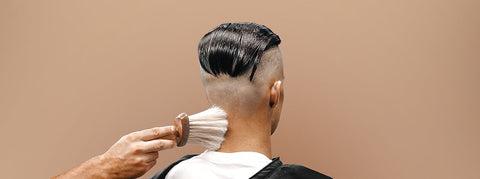Becoming a qualified barber requires attending a training academy. In Australia that will often be a TAFE but could also be a registered training organisation (RTO) that specialises in hairdressing and/or barbering qualifications.
Look out for schools and training institutions that offer a specialty certificate course in barbering called Certificate III in Barbering (SHB30516).
The other path you can take to learn the skills needed to be a barber is via an apprenticeship.
Vocational barber training to earn a certificate, or apprenticeship will be your starting point to becoming a qualified barber.
Let's have a look at some other tips and guidance for becoming a barber in Australia and why it can be a great profession to pursue.
Skillset of Successful Barbers
Barbers are in-demand professionals that need to have a specific set of hairstyling skills and knowledge. They also have a strong understanding of beard, moustache, and other facial hair grooming techniques. Successful barbers tend to have more skills up their sleeves than just hair styling and grooming.
On top of being masterful with hair, you will greatly benefit from developing your interpersonal skills to maintain good client relationships. In case you want to open your own shop, you also need to be able to work independently and be your own boss. Self-motivation, personal responsibility, and entrepreneurial skills are crucial to develop a good name for your business.
Another skill you may want to add to your list if you plan on running your own business is social media marketing. Beauty salons and barbershops often heavily rely on social media influence - especially in the early months and years. Many barbers also use apps like Instagram to encourage appointments.
It's obviously also great for business to receive good word of mouth from loyal clients. A business social media account can help with that and also showcase your skills to bring in new work.
Benefits of Working as a Barber
The rewards from barbering don't just come from enhancing your technical skills. Growing your skills at quickly establishing rapport with customers and expanding your creativity can also be very satisfying elements of the profession.
Other rewards can include business independency (i.e. starting your own business) and being able to create unique social communities, where hanging out becomes so much more than just a shave and a haircut.
That all sounds pretty good but also bear in mind that you need to be prepared to work long hours, over the weekend, and often during holidays. Some of the most important events in need of barber skills happen when everyone else is resting or partying. However, in the long run, you can also benefit from flexible hours as you can delegate and share part of the job tasks with colleagues. If you decide to rent a chair, you will be able to set your own hours and come and go as you please.
What About the Pay?
Barber's pay depends on skills and experience. Novices can earn from around $20 an hour, while long-standing pros can earn over $90,000 a year. As an apprentice, it can be best to look at the value of your training as an investment and not focus so much initially on the pay packet.
How to Become a Barber in Australia: 3 Steps to Successful Certification
There are a few steps you need to take to become a successful barber and eventually run your own shop. Like most great things, it takes time, perseverance and study. It's important to set goals on what you'd like to achieve to really make the most of a certification. It all starts with obtaining some type of qualification.
1. Obtain a Certificate III in Barbering
Depending on where you live and your preferred schooling method, you need to undertake formal training. Either on-campus and/or online classes to earn your certificate, you can find a method of study to best suit you. Some colleges offer weekly-based programs, starting from 29 to 35 weeks. Others provide a 12-month training schedule and even a year-and-a-half-long training that will include sales and technical skills.
If you want to study part-time, the studies may take as long as 3 years. You may be able to attend studies only on specific days in the week, as well as an upgrade to a new certificate. E.g. A Certificate III in Hairdressing. Usually, you must be at least 17 to start the training or 16, for the non-apprenticeship study mode.
The study curricula for barbers include various hairdressing and men's grooming techniques. There are mandatory and facultative study units. You will learn about:
- Shampoo and basin techniques
- Scalp and hair massage services
- Dry haircuts, classic scissors and over-comb techniques
- Beard and moustache shaping, trimming and designing
- Fading
- Hair colouring
- Ordering supplies
- Giving recommendations and advice
- Salon management skills
Studies are not cheap - the average tuition is $9,073 - but it will be worthwhile in the long run. You could also look for barbering scholarships to support your study costs, offered by several Australian universities, for example, Victoria University in Melbourne. You can look for other cosmetology or beauty salon scholarships online before you enrol into training. Some TAFE courses also offer student loan plans to help with costs.
2. Do apprentice work
Apprenticeships should be a part of the formal training as it is the best way to sense the job in all its glamour and get used to its downsides. By regularly practising with real clients, you will build up the knowledge, skills, and experience, and not only earn a certificate but also be able to do your job with confidence.
It is important to know that it is not mandatory to start studying at an academy and then do the apprenticeship. Some training academies do the full course as apprentice-type studies, which means you will be in a live environment and trained by industry professionals. Many schools offer formal studies as supplemental to practice, which means that informal training counts. However, if you want to do licensed work, it is important to get certified.
3. Find a job or open your own barbershop
Networking and improving your social presence on the local barbershop scene can start as early as you begin training. Since you will be among industry professionals, you can develop contacts that can support you when finding a job.
Alternatively, you can always do your own research in local barbershops or try online job platforms.
Experience
The path to becoming your own barber boss is a bit more complicated as you will need to invest in a salon or a barbershop. A barbershop includes extra investments for registration, licensing, shop equipment and regular supplies, extra staff, insurance, and rent. All these factors need to be taken into account and the costs for them can amount to at least several thousand dollars initially or up to $5,000. You may want to get a few years of experience under your belt before taking a step like that. Working for another business owner can really open your eyes to some of the challenges of running a business that you may otherwise not even consider.
Funding
A business loan or cash lending can be a solution, as well as sharing the costs with a colleague in a barbershop partnership. For that, you will need a detailed business plan. Most business loan providers have certain business age requirements, though. Therefore, recently trained barbers usually decide to get a job prior to opening their own place.
Getting Clients
Choosing a good location and finding your first clients is also a prerequisite for barbershop success. Building an image and a brand is something you need to work on personally so you can build a brand to match your skills, creative preferences, and the type of clients you want to welcome in your barbershop.
At this point, your social media skills could prove invaluable. The lack of demands typical for corporate office spaces makes barbering an attractive career option. If you think that you have what it takes to become a barber, you are in for years of a socially and creatively rewarding job in which you can be your own boss.
Barbers are Making a Comeback
You may have noticed that a few more men's barber shops are popping up around town. We are witnessing the comeback of the 50s and 60s era of barbershops and this retro revival is a sure welcome to the industry. To what do we owe the growth in barbering culture in Australia and why are we finally catching on with a trend that was already popular in the US, UK and other parts of Europe?
A Cultural Shift
In recent years Google has reported a large growth in men's hairstyle searches being made and often on mobile devices. This means that men are searching for hair advice on the go, possibly while waiting for their service at the barber shop.
Social media has definitely made an impact with more men looking at celebrity hair trends like the fade made popular by ex-One Direction singer, Zayn Malik.
Men Like Being Pampered Too
It seems the "metrosexual" movement has allowed men to become more comfortable with the idea of self-grooming and going to the barbershop for some pampering. Recent trends like the fade cut and beards require constant upkeep and maintenance.
With the rise in other traditional hairstyles such as the pompadour, and modern revisions like the fade into a pompadour, men are visiting the barber shop more regularly.
The Social Side of the Barber Shop
Perhaps it is the ritual of going to the barber shop that has contributed to its boom. The barber shop is a social hub and a safe space for men to get groomed and relax. It has become more acceptable for a man to take care of his appearance, which is a shift from the way men had approached their personal care in the past. This can also be validated by the emergence of more male grooming products available on the market.
Men Like Visiting a Barber
Many men feel a lot more comfortable in a barber shop than they do in a hairdressing salon that mostly caters to women. Salons are often designed with glamour and glitz that is intended to be more appealing to women. The ambience of the traditional barber shop is more suited to the masculine side of men. Men can have more manly conversations about sports and hang out with other guys. This might sound like a sexist generalisation but it is a reality of why many men intentionally visit a barber rather than a hairdressing salon.
There is often also a special kind of relationship men develop with their barber where they trust the skills of professional barbering are tailored to their needs. Men are usually the ideal client as they are very loyal, meaning that they will often return to the same place once that relationship and trust has been established with the barber.
Getting the Barber Supplies & Equipment You Need
Let's start off with some advice on clippers and discuss a few cutting techniques while we are here - for some inspiration.
Hair Clippers For Men
Men's and women's hair needs differ. More often than not, men go for classic short-cut looks. Today, these include fresh fades, short back and sides, or sometimes they go for unique and creative decorative designs. Think patterns, lines and shapes all carefully etched into the hair. Okay, now imagine trying to achieve this with a pair of scissors.
Hairdressers are skilled, but it would take an incredible amount of time to get anything close to the same results as what you would with clippers. This is one of the biggest factors as to why men are mostly seen sporting looks achieved from clippers.
Additionally, the risk of hair appearing uneven is greater in short hair. There is less room for error, to say the least. Cutting into the hair with scissors can leave the hair appearing patchy in some sections and noticeably missed.
While thinning scissors can be used, to really get that even look requires a little assistance from clippers.
Achieving The Perfect Cut With Clippers
One method that's commonly used is a comb to even out the hair and using clippers to cut straight across. More hairdressers are even trying this approach, especially for those clients with thick hair types. It can allow for that perfect blunt look!
Another way clippers can be used with long hair is using them to create a hybrid look. Think shaved underneath and long on top. You can go for a classic shaved army look or another hybrid look, and yes, mullets count too!
While some looks are easy to create at home with a good set of hair clippers.
Key Tips For Using Hair Clippers
While clippers seem easy enough to use, there are some considerations to make prior to cutting the hair. Firstly, what brand are you using and what sizing guides and attachments will you use? Each brand slightly varies and occasionally uses a different sizing guide, so remember to cross-reference before shaving.
Secondly, avoid cutting hair that is wet. The wetter hair is, the more likely it is to become clogged in the clippers. It can be slightly damp to ensure knots are out, but be careful not to overdo it.
Thirdly, when you start cutting, begin from the nape of the neck and work up. This will allow you to stop in the correct position. Starting from the top and going down will mean there is more room for error so it's best to go from the bottom up!
Barbershop Essentials
While hair clippers play a pivotal role in getting your barbershop up and running, you also need to have a few other tools on hand.
You'll also need a good pair of scissors. Both thinning scissors and regular will be used frequently to get the job done. Also, you'll need the following:
- Cape
- Water spray
- Combs
- Hair Dryer
- Beard oils/waxes
- Styling clays & gels
- Hand-held mirrors
- Razors & razor disposal units
- Brushes
- Hairspray
These tools will help aid the service that you can give to your clients. Remember, not everyone will want just a simple style. You may need to use a number of these items on just one client or at home to achieve the desired look!
Comment below with your questions or comments about becoming a barber. Good luck with your career.






Comments (0)
There are no comments for this article. Be the first one to leave a message!